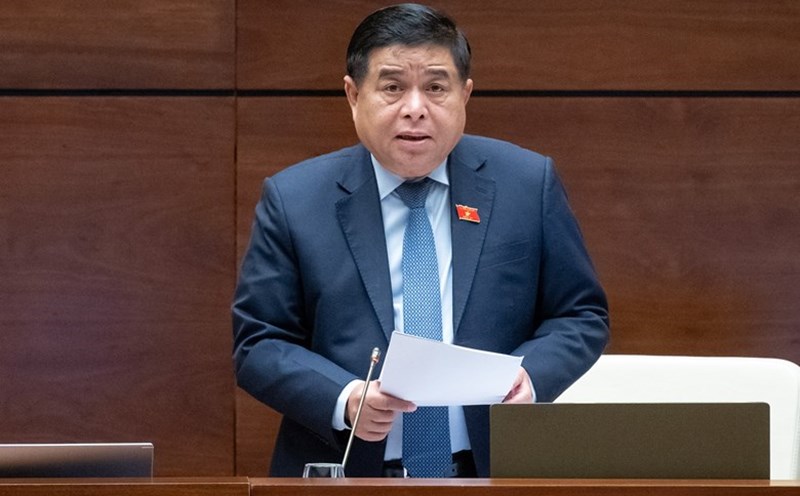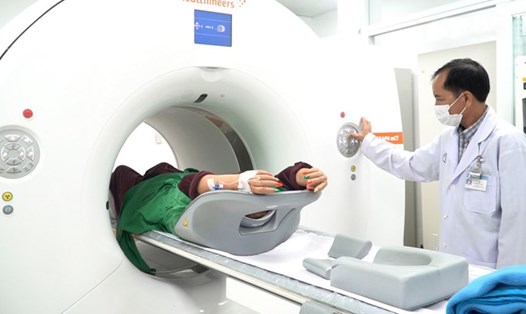Currently, in Ho Chi Minh City, only Cho Ray Hospital is equipped with a cyclotron system to supply radioactive medicine 18F-FDG to facilities with external PET/CT machines such as: Oncology Hospital and Military Hospital 175. Meanwhile, Rang Dong Medical Joint Stock Company - the unit that produces and supplies medicine 18F-FDG - has stopped production due to problems with procedures for using public assets.
The demand for diagnosis is high while the number of drugs provided is limited, so the waiting time is long. Many patients have to travel to Hanoi or other provinces, or even abroad, to have the procedure done.
Had to wait days for PET/CT scan
Speaking to Lao Dong Newspaper, Dr. Nguyen Xuan Canh - Head of the Department of Nuclear Medicine at Cho Ray Hospital said that the hospital's cyclotron has been operating for more than 15 years, and its productivity has decreased. On average, the reactor produces 25-30 doses of F-18 FDG radiation per day. Of which, about 15 doses are shared with the Oncology Hospital and Military Hospital 175 for PET/CT scans. At Cho Ray Hospital, patients also have to wait 2-3 weeks for PET/CT scans.
At Military Hospital 175, on average, the hospital's Nuclear Medicine Department performs 7 PET/CT scans per day (less than half of the demand), while the maximum capacity can perform about 14-15 scans per day.
At the Oncology Hospital - the southern region's final hospital specializing in cancer treatment, the need to accurately diagnose the stage of cancer helps doctors come up with appropriate treatment regimens for each patient.
According to Dr. Diep Bao Tuan - Deputy Director of the Oncology Hospital, PET/CT is a non-invasive diagnostic imaging method, with many advantages over other imaging methods in classifying cancer stages, as well as assessing treatment response and monitoring recurrence. The unit was transferred F18 - FDG drug from Cho Ray Hospital with a quantity of about 9 cases/day (meeting only 1/3 of the demand). Meanwhile, with 2 PET/CT machines located at 2 facilities of the hospital, the maximum response capacity can be increased to 50-60 cases/day if provided with enough drugs.
"Therefore, patients have to wait many days to get a PET/CT scan. Currently, the average waiting time for a PET/CT scan is about 10 days" - Deputy Executive Director of the Oncology Hospital told Lao Dong Newspaper.
When this system malfunctions, the doctor is forced to prescribe other alternative clinical tests such as CT scan, MRI, etc. However, in many cases, these methods cannot comprehensively, fully, and promptly assess changes after treatment, residual or recurrent disease, thereby providing an appropriate treatment regimen.
More radioactive drug production reactors needed
Dr. Diep Bao Tuan said that the demand for using PET/CT in diagnosing and monitoring the treatment results of cancer patients at the Oncology Hospital is very high. Therefore, the support and direction of the health sector is needed so that Ho Chi Minh City in general and the Oncology Hospital in particular can have more cyclotrons to better serve patients.
Dr. Nguyen Xuan Canh said that in the future, nuclear medicine will play an increasingly important role in the diagnosis and treatment of cancer. With the development of technology, the cost of PET/CT devices will gradually decrease, making them more popular.
In addition, research and development of new radioactive drugs will open up new prospects in cancer treatment.
Dr. Canh also assessed that nuclear medicine could be deployed in provincial hospitals in the future. This would not only meet the increasing demand for medical examination and treatment of the people but also help reduce the burden on upper-level hospitals.
Radiopharmaceutical 18F-FDG has a short half-life
According to Mr. Nguyen Hai Nam - Deputy Chief of Office of Ho Chi Minh City Department of Health, radioactive drug 18F-FDG has a short half-life, so its use must be carried out immediately after production. Transporting the drug from other localities to Ho Chi Minh City is not feasible. Therefore, to meet the needs of patients, it is only possible to produce it in the city in time.











